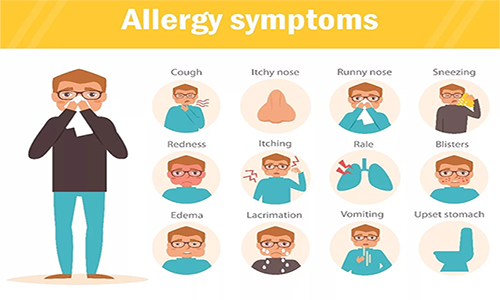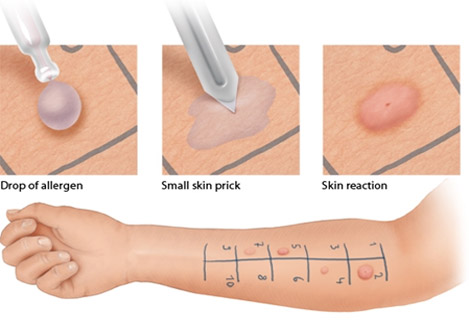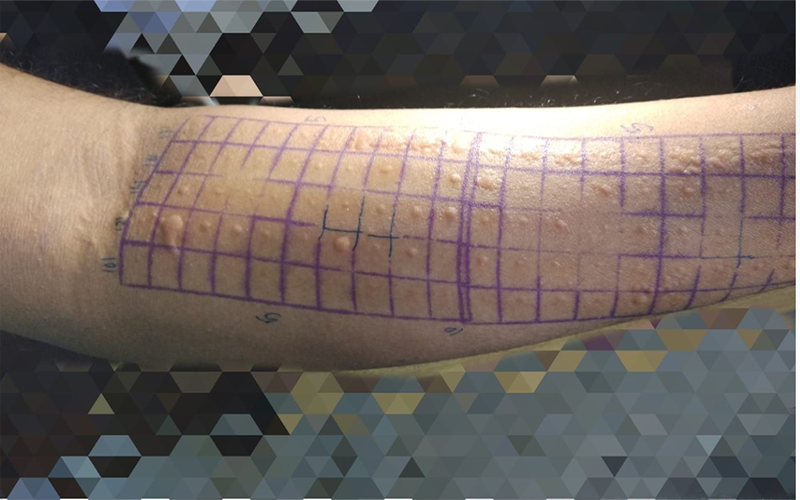Allergy Testing
What is ‘Allergy’?
Allergy occurs when your body defence system reacts to a foreign substance — such as pollen, bee venom or pet — or a food that doesn't cause a reaction in most people.
Your immune system produces substances known as antibodies. When you have allergies, your immune system makes antibodies that identify a particular allergen as harmful, even though it isn't.
When you come into contact with the allergen, your immune system's reaction can damage your skin, sinuses, airways or digestive system.
The severity of allergies varies from minor irritation to anaphylaxis — a potentially life-threatening emergency.
While most allergies can't be cured, treatments can help relieve your allergy symptoms.


What is skin prick allergy testing?
During allergy skin tests, your skin is exposed to suspected allergy-causing substances (allergens) and is then observed for signs of an allergic reaction.
Along with your medical history, allergy tests may be able to confirm whether a particular substance you touch, breathe or eat is causing symptoms.
Why is it done?
Allergy skin tests are widely used to help diagnose allergic conditions, including:
- Hay fever (allergic rhinitis)
- Allergic asthma
- Dermatitis (eczema)
- Food allergies
- Penicillin allergy
- Bee venom allergy
What to expect on the day of ‘Skin prick allergy test’?
• A skin prick test, also called a puncture or scratch test, checks for immediate allergic reactions to various different substances at once.
• This test is usually done to identify allergies to pollen, mold, pet dander, dust mites and foods. In adults, the test is usually done on the forearm.
• Allergy skin tests aren't painful. This type of testing uses needles (lancets) that barely penetrate the skin's surface.
• He or she then uses a lancet to prick the extracts into the skin's surface.
• About 15 minutes after the skin pricks, the nurse observes your skin for signs of allergic reactions.
• If you are allergic to one of the substances tested, you'll develop a raised, red, itchy bump (wheal) that may look like a mosquito bite.
• The nurse will then measure the bump's size and record the results. Next, he or she will clean your skin with alcohol to remove the marks.
Source: (Click Here)
Your doctor may advise against skin testing if you:
Have ever had a severe allergic reaction. You may be so sensitive to certain substances that even the tiny amounts used in skin tests could trigger a life-threatening reaction (anaphylaxis).
Take medications that could interfere with test results. These include antihistamines, many antidepressants and some heartburn medications. Your doctor may determine that it's better for you to continue taking these medications than to temporarily discontinue them in preparation for a skin test.
Have certain skin conditions. If severe eczema or psoriasis affects large areas of skin on your arms and back — the usual testing sites — there may not be enough clear, uninvolved skin to do an effective test.
Other skin conditions, such as dermatographism, can cause unreliable test results.
Blood tests (in vitro immunoglobulin E antibody tests) can be useful for those who shouldn't or can't undergo skin tests. Blood tests aren't used for penicillin allergy.
In general, allergy skin tests are reliable for diagnosing allergies to airborne substances, such as pollen, pet dander and dust mites. Skin testing may help diagnose food allergies. But because food allergies can be complex, you may need additional tests or procedures.







